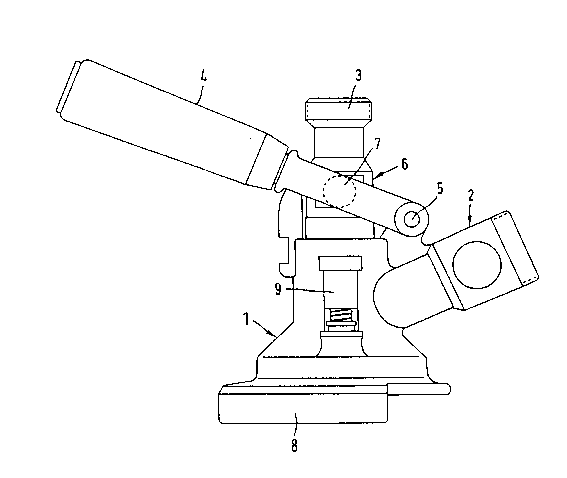Une partie des informations de ce site Web a été fournie par des sources externes. Le gouvernement du Canada n'assume aucune responsabilité concernant la précision, l'actualité ou la fiabilité des informations fournies par les sources externes. Les utilisateurs qui désirent employer cette information devraient consulter directement la source des informations. Le contenu fourni par les sources externes n'est pas assujetti aux exigences sur les langues officielles, la protection des renseignements personnels et l'accessibilité.
L'apparition de différences dans le texte et l'image des Revendications et de l'Abrégé dépend du moment auquel le document est publié. Les textes des Revendications et de l'Abrégé sont affichés :
| (12) Demande de brevet: | (11) CA 2163106 |
|---|---|
| (54) Titre français: | ROBINET DE SOUTIRAGE POUR CONTENANTS OU TONNEAUX DE BOISSON |
| (54) Titre anglais: | TAP HEAD FOR BEVERAGE CONTAINERS OR VESSELS |
| Statut: | Réputée abandonnée et au-delà du délai pour le rétablissement - en attente de la réponse à l’avis de communication rejetée |
| (51) Classification internationale des brevets (CIB): |
|
|---|---|
| (72) Inventeurs : |
|
| (73) Titulaires : |
|
| (71) Demandeurs : |
|
| (74) Agent: | SWABEY OGILVY RENAULT |
| (74) Co-agent: | |
| (45) Délivré: | |
| (86) Date de dépôt PCT: | 1994-05-06 |
| (87) Mise à la disponibilité du public: | 1994-11-24 |
| Requête d'examen: | 1999-02-26 |
| Licence disponible: | S.O. |
| Cédé au domaine public: | S.O. |
| (25) Langue des documents déposés: | Anglais |
| Traité de coopération en matière de brevets (PCT): | Oui |
|---|---|
| (86) Numéro de la demande PCT: | PCT/EP1994/001477 |
| (87) Numéro de publication internationale PCT: | EP1994001477 |
| (85) Entrée nationale: | 1995-11-16 |
| (30) Données de priorité de la demande: | ||||||
|---|---|---|---|---|---|---|
|
Tap heads for beverage containers or barrels respectively
comprise a plunger able to be actuated by a hand lever, a
beverage connection, a connection for a gaseous pressure medium
and a container connection. In previous tap heads, the problem
exists that a high gas pressure is maintained in the interior of
the tap head, when the tap head is closed. Due to this the
housing gasket of the tap head is pressed against the flange of
the fitting, so that the tap head can only be released from the
flange with a considerable application of force.
In order to provide a tap head, which makes it possible to
respectively remove the gas pressure without risk in the interior
of the tap head, it is proposed that a relief valve is connected
to the interior of the tap head.
Note : Les revendications sont présentées dans la langue officielle dans laquelle elles ont été soumises.
Note : Les descriptions sont présentées dans la langue officielle dans laquelle elles ont été soumises.

2024-08-01 : Dans le cadre de la transition vers les Brevets de nouvelle génération (BNG), la base de données sur les brevets canadiens (BDBC) contient désormais un Historique d'événement plus détaillé, qui reproduit le Journal des événements de notre nouvelle solution interne.
Veuillez noter que les événements débutant par « Inactive : » se réfèrent à des événements qui ne sont plus utilisés dans notre nouvelle solution interne.
Pour une meilleure compréhension de l'état de la demande ou brevet qui figure sur cette page, la rubrique Mise en garde , et les descriptions de Brevet , Historique d'événement , Taxes périodiques et Historique des paiements devraient être consultées.
| Description | Date |
|---|---|
| Demande non rétablie avant l'échéance | 2002-05-06 |
| Le délai pour l'annulation est expiré | 2002-05-06 |
| Réputée abandonnée - omission de répondre à un avis sur les taxes pour le maintien en état | 2001-05-07 |
| Inactive : Dem. traitée sur TS dès date d'ent. journal | 1999-03-18 |
| Inactive : Renseign. sur l'état - Complets dès date d'ent. journ. | 1999-03-18 |
| Inactive : Acc. réc. RE - Pas de dem. doc. d'antériorité | 1999-03-18 |
| Toutes les exigences pour l'examen - jugée conforme | 1999-02-26 |
| Exigences pour une requête d'examen - jugée conforme | 1999-02-26 |
| Inactive : Demande ad hoc documentée | 1997-05-06 |
| Réputée abandonnée - omission de répondre à un avis sur les taxes pour le maintien en état | 1997-05-06 |
| Demande publiée (accessible au public) | 1994-11-24 |
| Date d'abandonnement | Raison | Date de rétablissement |
|---|---|---|
| 2001-05-07 | ||
| 1997-05-06 |
Le dernier paiement a été reçu le 2000-04-13
Avis : Si le paiement en totalité n'a pas été reçu au plus tard à la date indiquée, une taxe supplémentaire peut être imposée, soit une des taxes suivantes :
Les taxes sur les brevets sont ajustées au 1er janvier de chaque année. Les montants ci-dessus sont les montants actuels s'ils sont reçus au plus tard le 31 décembre de l'année en cours.
Veuillez vous référer à la page web des
taxes sur les brevets
de l'OPIC pour voir tous les montants actuels des taxes.
| Type de taxes | Anniversaire | Échéance | Date payée |
|---|---|---|---|
| TM (demande, 4e anniv.) - petite | 04 | 1998-05-06 | 1998-05-04 |
| Requête d'examen - petite | 1999-02-26 | ||
| TM (demande, 5e anniv.) - petite | 05 | 1999-05-06 | 1999-05-05 |
| TM (demande, 6e anniv.) - petite | 06 | 2000-05-08 | 2000-04-13 |
Les titulaires actuels et antérieures au dossier sont affichés en ordre alphabétique.
| Titulaires actuels au dossier |
|---|
| D.S.I. JOSEF BREITWISCH & CO GMBH |
| Titulaires antérieures au dossier |
|---|
| DETLEF OBIER |
| HORST DEGENKOLBE |